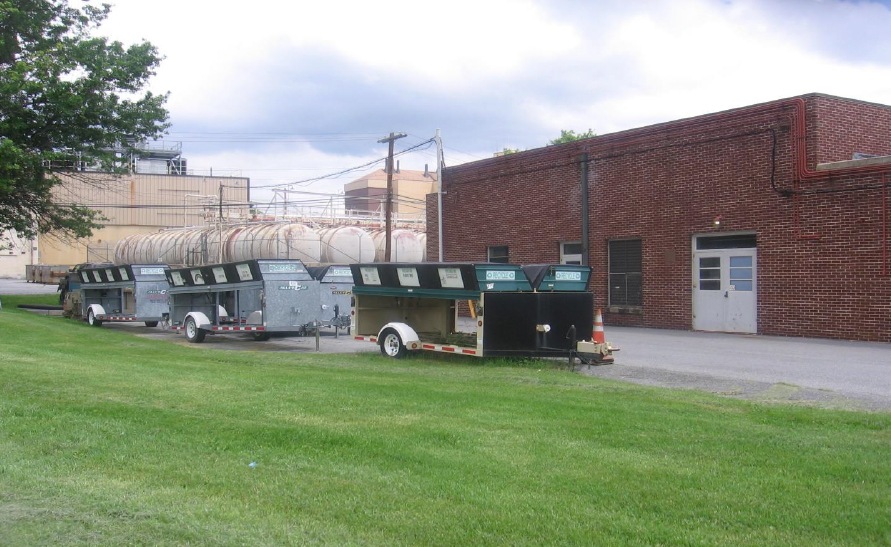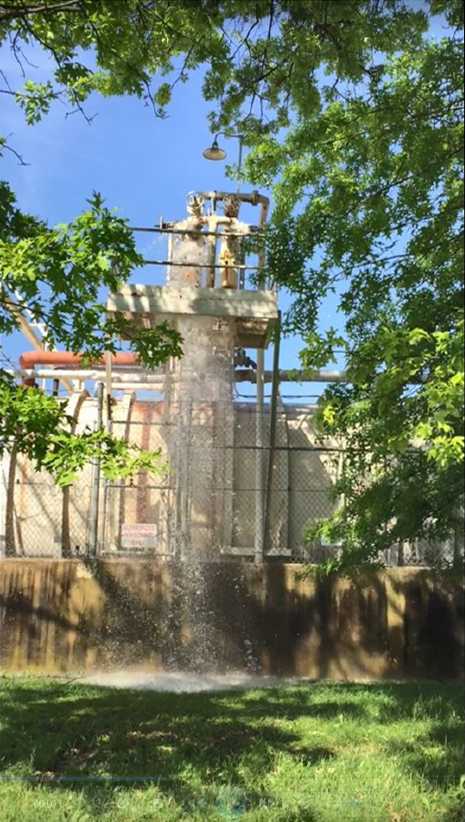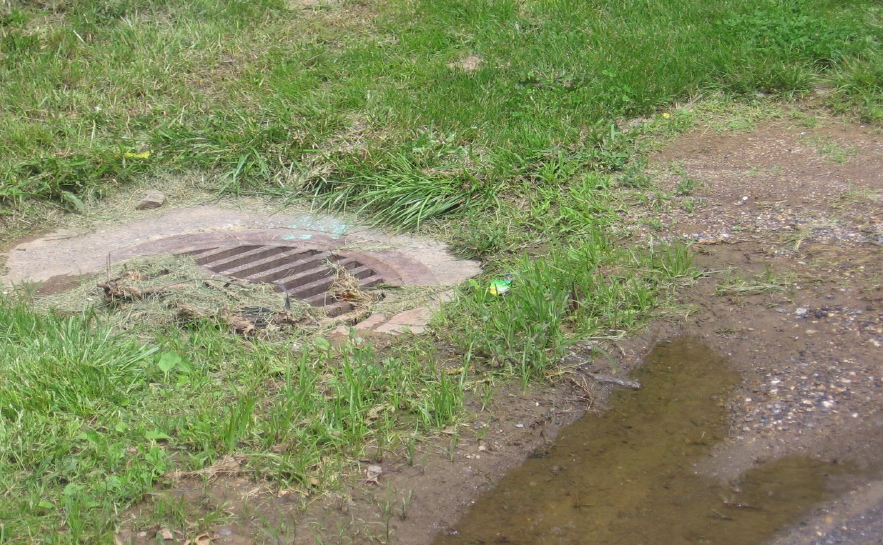This post was originally published on this site

[Editor’s note: In 2019, federal lab regulators ordered the prestigious U.S. Army Medical Research Institute of Infectious Diseases to halt all work with dangerous pathogens, such as Ebola and anthrax, which can pose a severe threat to public health and safety.
Army officials had assured the public there was no safety threat and indicated that no pathogens had leaked outside the laboratory after flooding in 2018. But in a new book released April 25, investigative reporter Alison Young reveals there were repeated and egregious safety breaches and government oversight failures at Fort Detrick, Maryland, that preceded the 2019 shutdown. This article is adapted from “Pandora’s Gamble: Lab Leaks, Pandemics, and a World at Risk.”]
Unsterilized laboratory wastewater from the U.S. Army Medical Research Institute of Infectious Diseases at Fort Detrick, Maryland, spewed out the top of a rusty 50,000-gallon outdoor holding tank, the pressure catapulting it over the short concrete wall that was supposed to contain hazardous spills.
It was May 25, 2018, the Friday morning before Memorial Day weekend, and the tank holding waste from labs working with Ebola, anthrax, and other lethal pathogens had become overpressurized, forcing the liquid out a vent pipe.
An estimated 2,000-3,000 gallons streamed into a grassy area a few feet from an open storm drain that dumps into Carroll Creek — a centerpiece of downtown Frederick, Maryland, a city of about 80,000 an hour’s drive from the nation’s capital.
But as the waste sprayed for as long as three hours, records show, none of the plant’s workers apparently noticed the tank had burst a pipe. This was despite the facility being under scrutiny from federal lab regulators following catastrophic flooding and an escalating series of safety failures that had been playing out for more than a week.
***
Before the outdoor tank failed, there had already been breaches of other lab waste storage tanks inside the sterilization plant.
On May 17, 2018, in the wake of devastating storms, workers at Fort Detrick discovered that the plant’s basement was filling with water that would reach 4 to 5 feet deep. Some of it was rainwater seeping in from outdoors. But a lot was fluid leaking from the basement’s long-deteriorating tanks that held thousands of gallons of unsterilized lab wastewater.
As basement sump pumps forced floodwater into these tanks, the influx disgorged lab waste through cracks along the tops of the tanks, sending it streaming back toward the floor.
The steam sterilization plant, referred to as “the SSP,” was built in 1953. It was designed to essentially cook the wastewater that flowed into it from Fort Detrick’s biological laboratories, ensuring that all deadly pathogens were killed before the water was released from the base into the Monocacy River.

USAMRIID’s safety protocols called for a two-step kill process for lab wastewater. Before it was sent down drains into Fort Detrick’s dedicated laboratory sewer system for heat treatment at the plant, lab workers were supposed to pretreat potentially infectious liquids with bleach or other chemicals.
But chemical disinfection can be tricky. To be effective, it requires workers to use the right kind of disinfectant at the right concentration and, importantly, to ensure that the disinfectant remains in contact with the microbes long enough to kill them.
Any living organisms left behind could multiply.
Despite the plant’s importance to protecting public health, by May 2018 it had become a rusting, leaking, temperamental hulk.
It was 65 years old and was supposed to have been torn down already. But a replacement plant completed at a cost to taxpayers of more than $30 million had suffered a “catastrophic failure” in 2016 and couldn’t be repaired, records show.
So even though the sterilization plant was in significant disrepair, USAMRIID still used it, with a much smaller amount of waste coming from a U.S. Department of Agriculture lab that worked with weeds and plant diseases.
On a typical day in 2018, state records show, these facilities sent about 30,000 gallons of laboratory wastewater into the plant, which had five 50,000-gallon storage tanks in its basement, plus an additional nine interconnected 50,000-gallon storage tanks outside.
Fort Detrick officials had been aware for some time that the tops of the aging basement storage tanks had multiple leaks caused over the years by chlorine gases accumulating on the surface of the wastewater, according to a state investigation report of the incident and the Army garrison’s responses to questions.
It was so much of an issue that the garrison’s Directorate of Public Works employees, who operated the plant, had to make sure the tanks didn’t ever fill up completely or else the potentially infectious water would spill out.
Their workaround was to try to limit the amount of waste in each basement tank to about half capacity. But the flooding in May 2018 made that impossible because the sump pumps were sending so much water into the sterilization system.
Lab inspectors from the Centers for Disease Control and Prevention had apparently failed to recognize the plant was in such disrepair. The CDC offered no explanation of how the problems were missed, but after the incident it created a new policy and task force for overseeing labs’ wastewater decontamination systems.
Samuel Edwin, director of the CDC’s select agent regulatory program, did not grant an interview. Two years before the plant flooded and failed, the CDC had hired Edwin from USAMRIID, where he had spent eight years as the biological surety officer and responsible official in charge of making sure USAMRIID’s labs complied with federal regulations.
Edwin, in an emailed statement, said he wasn’t aware of any corrosion or leak issues while he worked at USAMRIID.
Federal Select Agent Program regulators from the CDC inspected the plant annually, Edwin said, adding: “FSAP did not observe, and I did not report, any issues with the SSP during this time.”
Four days after the plant flooded, CDC inspectors arrived at Fort Detrick and spent May 21 and 22, 2018, inspecting the facility. As the CDC inspectors left Fort Detrick, they allowed USAMRIID to resume some research activities.
The long Memorial Day weekend was coming up, and the weather forecast showed more rain headed toward Frederick. To protect the plant against further flooding, a decision was made to pump the water inside the basement’s waste storage tanks into the auxiliary tanks outdoors. The hope was to free up an additional 80,000 gallons of capacity, Fort Detrick said in response to questions.
Things didn’t go as planned.
Somewhere along the way, an automatic shut-off feature designed to keep the outdoor tanks from overfilling was deactivated, Fort Detrick officials later said in response to questions.
***

It was an employee of the National Cancer Institute, which has a research building at Fort Detrick near the plant, who spotted wastewater spewing from an outdoor wastewater tank, over the containment wall, and into a grassy area with an open storm drain inlet that sends runoff into Carroll Creek, according to records and Fort Detrick’s responses to questions. The person called it in to the “trouble desk” of the garrison’s Directorate of Public Works on that Friday morning, May 25.
But nobody checked on the tank until noon, Fort Detrick said. The dispatched workers reported back that they didn’t see any leaking fluid. They checked the tanks again at 2 p.m. and still saw nothing. So nothing was done.
If not for the persistence of the unidentified National Cancer Institute employee, the leak would have been ignored.
On the Wednesday after the holiday, that person contacted the Fort Detrick safety manager. They wanted to follow up on their previous report — and this time they provided photos proving the tank had been spraying wastewater nearly a week earlier.
The photos got the base’s attention.
The Fort Detrick Command was immediately notified. So was USAMRIID’s leadership.
But another day passed before anyone alerted state and local authorities.
***
A significant question remained: What was in the lab wastewater that spewed out of the tank?
If viable organisms like anthrax bacteria had been sent into public waterways, the consequences could be disastrous for USAMRIID, Fort Detrick — and the CDC regulators who allowed them to keep operating despite the jury-rigged sterilization plant.
The risk that people or animals would become infected was probably low, with any organisms likely reduced below infectious levels as the waste became diluted by the floodwaters still surging through the area’s streams and rivers. But public backlash and headlines were certainties.
So, what was in the wastewater?
Nobody seemed to be looking very hard to find out.
USAMRIID and Fort Detrick officials offered only generalized assurances that their tests hadn’t detected any pathogens. But they would not release copies of testing reports.
Rather than serve as watchdogs in the public interest, all levels of government seemed to largely defer to USAMRIID and its expertise — despite the organization’s egregious safety breach and potential self-interest in damage control.
In the weeks before the tank started spewing wastewater, USAMRIID had been experimenting with 16 organisms, and lab officials said they had tested the concrete pad and the ground adjacent to the tanks and hadn’t detected any of them. Anthrax was the organism of greatest concern because of its ability to persist in the environment, something many pathogens can’t do for very long.
Other organisms that were possibly in the wastewater were Ebola virus, Lassa fever virus, Junín virus, Marburg virus, Venezuelan equine encephalitis virus, eastern equine encephalitis virus, Crimean-Congo hemorrhagic fever virus, Nipah virus, Burkholderia pseudomallei, Burkholderia mallei, Francisella tularensis, western equine encephalitis virus, Dobrava-Belgrade virus, Seoul virus, and Chikungunya virus.
But all test results were negative, USAMRIID officials said.

How meaningful was USAMRIID’s testing?
USAMRIID and Fort Detrick officials didn’t do any environmental tests until May 31 and June 1 — about a week after the tank overflowed. By then, it had rained, which, in response to questions, USAMRIID acknowledged would have had a “dilutional effect” if any pathogens had been present.
Did USAMRIID test two samples or 20 samples or 200 samples? What were the detection limits of the testing methods used? How might the rain — or wind or sunlight — have affected the ability of the tests to detect organisms a week after their release?
USAMRIID and Fort Detrick officials would not release copies of the testing reports. For months, they wouldn’t even say how many samples were tested.
“The test plan was reviewed and approved by the CDC,” USAMRIID said in a written statement.
CDC lab regulators said USAMRIID developed and conducted its own testing.
“USAMRIID test results indicated the public health risk associated with any potential release was negligible; however, you would need to contact USAMRIID for full information about the testing methods and results,” the CDC said.
Eventually, after months of requests, USAMRIID said its testing to determine whether pathogens had escaped involved just five swab samples collected from “various locations” at the plant.
As further evidence that no deadly microbes had escaped, records show that Army officials noted to state and local officials — without providing reports or details — that they had done additional validation testing inside USAMRIID’s laboratories that showed lab drains contained sufficient disinfectant to kill anything poured down them. The implication was that there was no risk from the plant’s unsterilized wastewater and that the heat-treating process was nice, but not necessary.
Documents obtained under the Freedom of Information Act revealed that these drain tests weren’t performed under real-life conditions. Instead, the Army acknowledged, they were done in empty labs where no work had been occurring and no animals were present.
Of perhaps greater concern: The drain tests were performed solely in response to the regulatory and public relations crisis from the lab leak in May 2018. It was the only time — from January 2015 through at least March 2022 — that USAMRIID had checked the adequacy of the disinfectant in its drains, the Army’s FOIA response said.
Excerpted from “Pandora’s Gamble” by Alison Young (Copyright 2023). Used with permission from Center Street, a division of Hachette Book Group Inc.
Alison Young is an investigative reporter in Washington, D.C., and serves as the Curtis B. Hurley Chair in Public Affairs Reporting for the University of Missouri School of Journalism. During 2009-19, she was a reporter and member of USA Today’s national investigative team. She has reported on laboratory accidents for 15 years for news organizations that include USA Today, The Atlanta Journal-Constitution, and ProPublica.